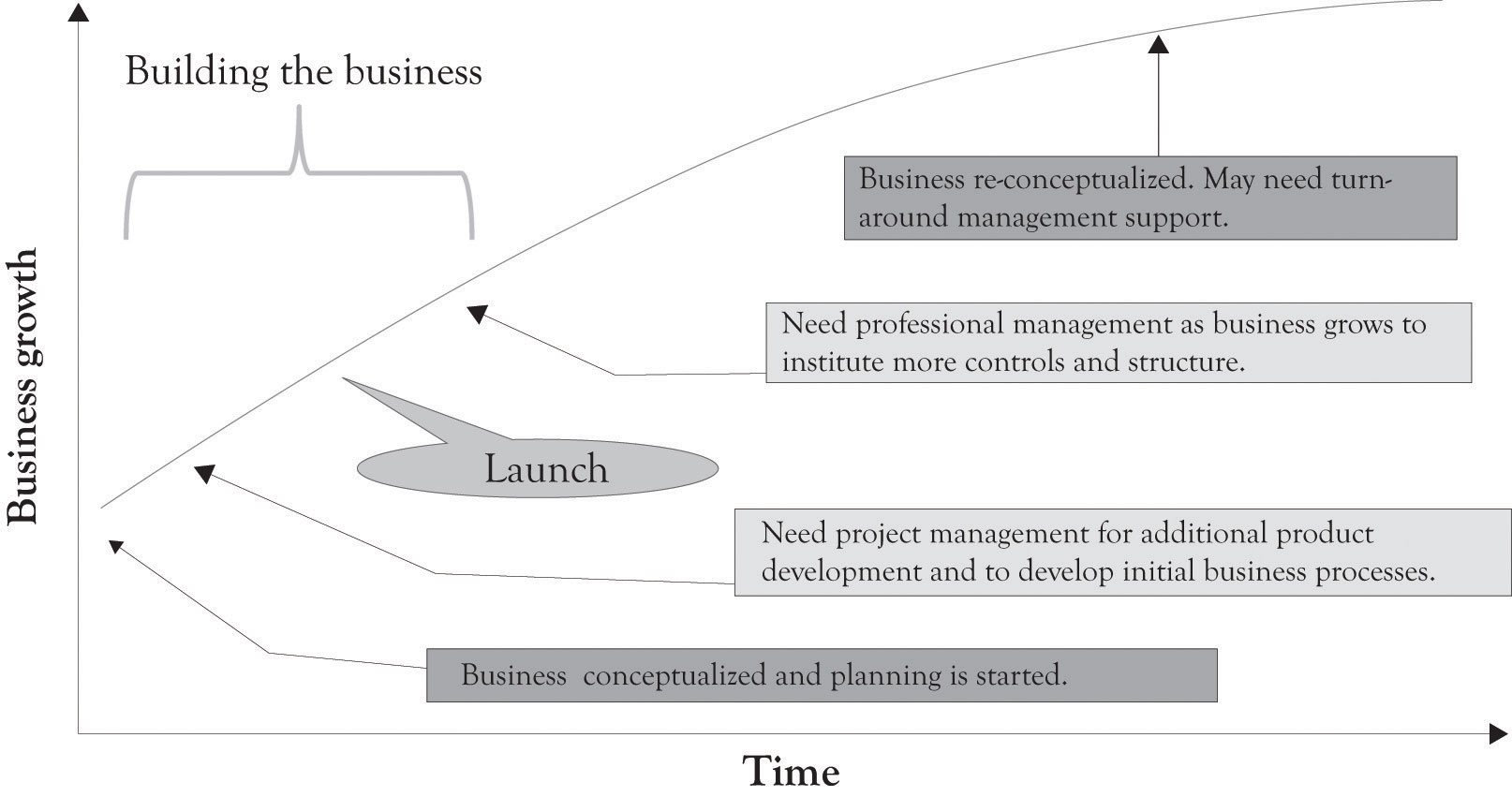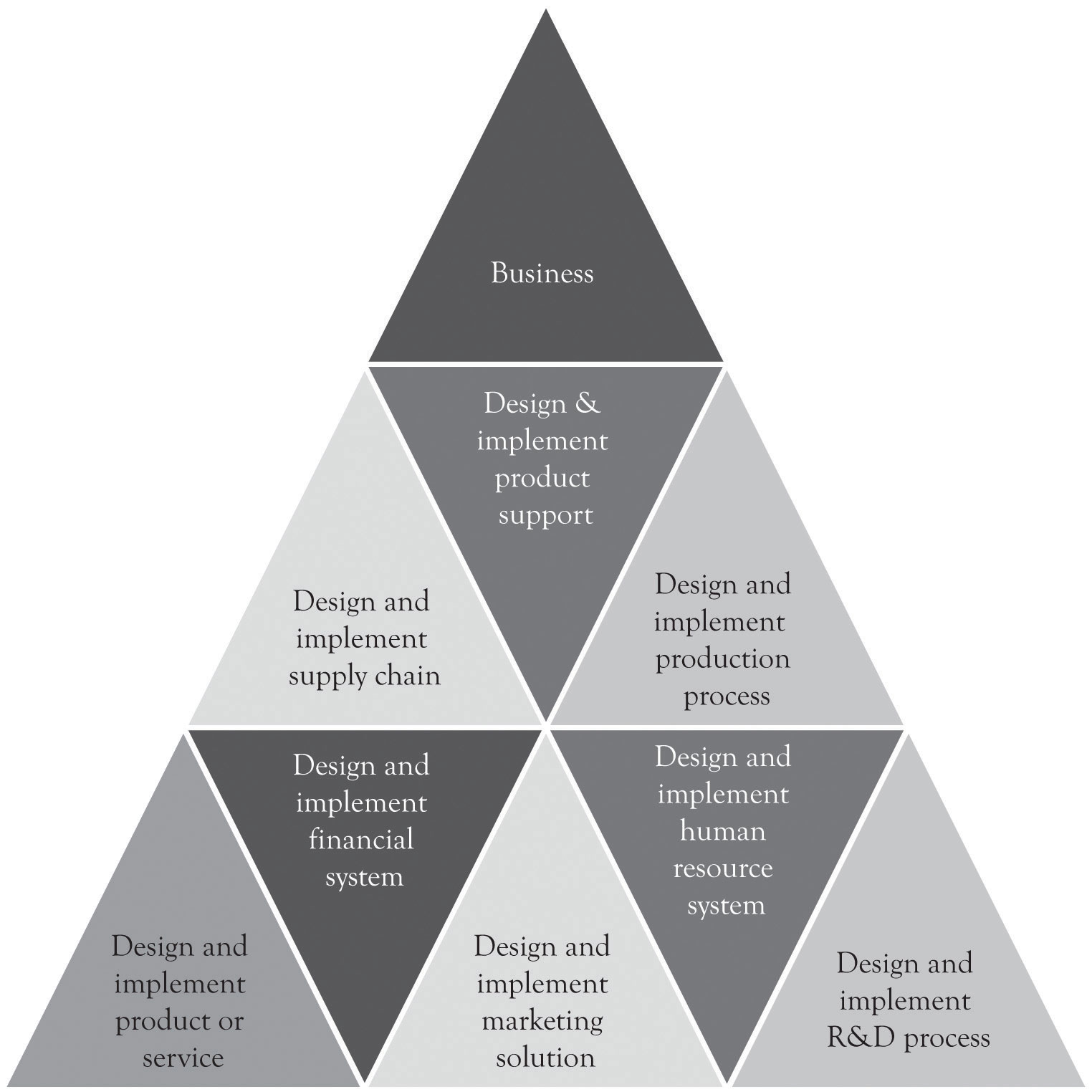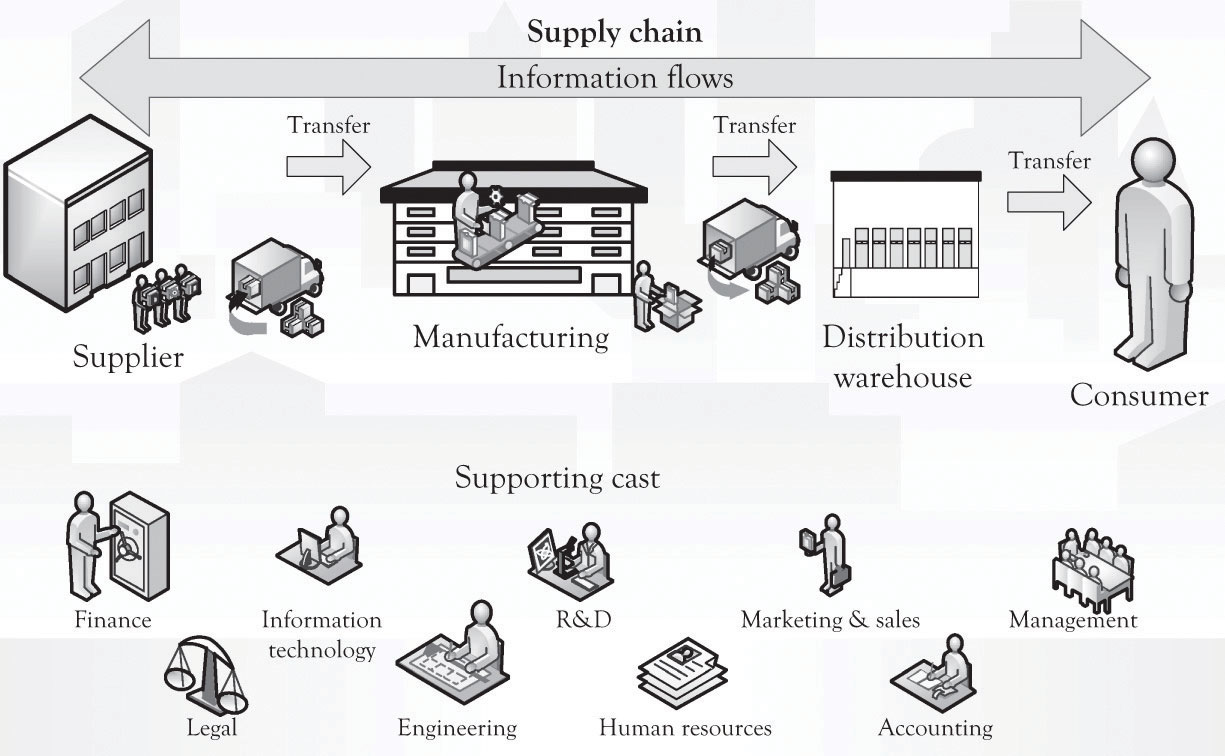This is “Building-the-Business Phase”, section 13.1 from the book Creating Services and Products (v. 1.0). For details on it (including licensing), click here.
For more information on the source of this book, or why it is available for free, please see the project's home page. You can browse or download additional books there. To download a .zip file containing this book to use offline, simply click here.
13.1 Building-the-Business Phase
Once the business model has been created and the business plan has been developed, the hard work begins. In most situations, everything is new and needs to be built up from scratch. The entire supply chain has to be built and tested to insure that orders for products and services can be accepted, filled, and supported. This is the Building-the-Business phase and it is vital to a successful business launch. As illustrated in Note 13.1 "Key Business Questions Before Launch", several key business questions must be answered before launching the business.
The hard part is to install initial processes or systems to make the business work, and that is where project management is essential. We use the term project management system loosely, since in many instances the system can be self-contained and organized in the mind of the entrepreneur. Nevertheless, the hard part involves building the business to produce the product and deliver the service. This requires project management. Even if you have plans for manufacturing, marketing, and distributing the product, you still need to have a process to accomplish or execute the plan.
Figure 13.1 Key Management Activities During the Business Life Cycle

Key Business Questions Before Launch
- Where will the product or service be made?
- Who will make the product?
- How will it be made?
- How will orders be tracked?
- With whom, when, and why will partnerships and alliances be formed?
- What will the supply chain look like and how will dependencies work?
- Should supply chain tasks be outsourced, off-shored, or in-tasked?
- What will the information technology look like in terms of hardware, software, and networking?
- Are there important issues related to the supply of components/materials?
- How will order fulfillment work?
- Are there important issues related to the fulfillment of orders?
- Where will the organization build core competencies and capabilities?
- How will employees be acquired and retained?
- How will business and accounting transactions be handled?
In many instances, entrepreneurs turn to turnkey systems for accounting and inventory management. Turnkey systemsReady-to-go-software, ready-to-go-processes, or both for running a business. are ready-to-go-software, ready-to-go-processes, or both for running a business. Time and effort is still needed to identify the turnkey solution and then more time and effort is required to actually implement it. Some sort of mechanism is necessary for determining what solution fits the business, how the system will be implemented, who will operate the system, and how it fits in with the other business activities. Even if the so-called turnkey solutions have been identified for accounting and inventory management, additional planning is needed for implementing and creating business processes for installing and running the system.
Project managementThe tool for executing the plan and installing the business processes. is the tool for executing the plan and installing the business processes. It helps to detail what tasks will be accomplished, who will be involved in completing the tasks, and when tasks should start and finish. The minimal tasks that need to be accomplished for a business to start or launch include marketing and sales, production and operations, staffing, and accounting. In addition, some sort of research and development (R&D) process needs to be initiated soon after launch in order to re-prime the pump. These are the first steps in designing organizations for the long term.
Organizational designInvolves the simultaneous integration of the tasks that need to be completed by overlaying some organizational structure that uses a blend of technology and people to fulfill the organizational mission. involves the simultaneous integration of the tasks that need to be completed by overlaying some type of organizational structure that uses a blend of technology and people to fulfill the organizational mission.Adapted from Leavitt (1965). Here are the Building-the-Business functions and critical questions that need to be in place before or soon after launch:
-
Need a marketing function or system:
- How will you promote your product or service?
- What techniques will you use to acquire customers?
- How will you retain and lock-in customers?
- How will you distribute and sell your product?
- How will you support your customers and maintain an ongoing relationship?
- How will you track customer satisfaction?
-
Need an operations or production function or system:
- Who will design the product/service and where will product/service design take place?
- Where will the product be made and who will make it?
- How will it be made?
- Who will supply the components and materials?
- How will the company keep track of finished goods inventory, components, and raw materials and track the production process?
- How will order fulfillment take place?
-
Need a human resource function or system:
- What kind of and how many employees are needed to run the business?
- Where will we recruit employees?
- What criteria will be used to select employees?
- How will performance be evaluated and rewarded?
- What kind of compensation incentives will be offered (salary, stock options, and benefits)?
- How will employees be trained and developed?
-
Need an accounting function or system:
- How will you keep track of business transactions?
- How will you track business performance?
- How will the company handle accounts payable, accounts receivables, general ledger, purchase orders, and payroll?
-
Need an R&D function or system (immediately after launch):
- What organizational functions will be involved in product development and deployment?
- Who, where, and how will R&D (learning-about and learning-by-doing) be conducted?
- How will product and service development and deployment be evaluated?
- How will scientific, product, and organizational knowledge be retained and utilized (knowledge management)?
-
Need legal counsel and assistance:
- Assist in selecting appropriate form of business.
- Assist with real estate and rental transactions.
- Assist in developing contracts for employee benefits and employment contracts.
- Provide legal expertise on venture and angel investment funds and with initial public offerings of stock and related financial funding issues.
- Assist in protecting intellectual property in the form of copyrights, patents, and trademarks.
Even the simplest start-up company has to accomplish the functions described above in some capacity. These systems may be in the mind of the entrepreneur and also executed by the entrepreneur, but they are still necessary for survival. There are other system processes that need to be in place as illustrated in Figure 13.2 "Systems Emerging Over Time". These systems or functions typically emerge and evolve as the business grows and prospers. A good way to consider the complexity of a large business is to think about the components of the supply chain. This is again illustrated in Figure 13.3 "Large Organizations Need Many Systems and Structures" where a number of critical processes need to be in place for a large and growing supply chain. In larger organizations, these activities are part of a more formal approach. The formal approach is project management. If a business only has one employee, the entrepreneur, then all the systems will be conceptualized and executed by the entrepreneur. However, even in a small, one-person operation, understanding and implementing some type of project management is necessary in order to deal with the complexity of the start-up process. Just having a checklist of things to do and things that have been accomplished will help in dealing with the overwhelming complexity of launching a start-up.
Figure 13.2 Systems Emerging Over Time

Figure 13.3 Large Organizations Need Many Systems and Structures





